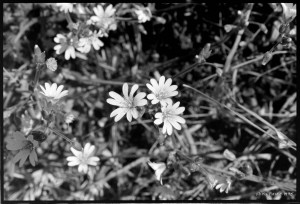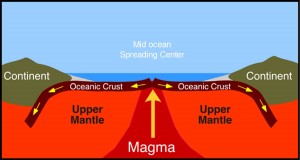Click photos to enlarge.

Images
Stemming the tide
Below is a diagram that was never shown to me in science class. Alfred Wegener proposed his theory of continental drift in 1912, but it was not until 1960 that most scientists began to accept the new paradigm that continents move around. The idea of crust formation at mid ocean ridges came even later in 1966. So when scientists and teachers in the 1950s and 1960s presented a story about the serpentine rock underlying Soldiers Delight, they got it wrong. Serpentinite is formed in the lower oceanic crust, typically at the mid ocean spreading centers. That’s where it picks up its heavy minerals, like chromium, nickel, and magnesium, which are more abundant in the mantle and deep crust. When Africa floated over here 300 million years ago, a little bit of this oceanic rock got pushed along with it and ended up in the Appalachian Mountains, and in Soldiers Delight. Nobody knew that in 1960.

Red Dog Lodge
Click photos to enlarge

Red Dog Lodge was built in 1912 as a hunting lodge and has been a symbol of Soldiers Delight for me since I started meeting, playing, and hiking there when I was a kid in the 1950s. It always seemed like a place with secrets, a place where men once did things that weren’t done anymore, things that Tom Sawyer would know about because he had seen them in a book. It was built for Mr. Dolfield, who gave his name to the road I grew up on, and also for the namesake of Sherwood Hill Road where our three-letter friends the Lees and the Coes lived. I knew Mr. Hibline who used the lodge after World War II, but I never knew that he was a person who used it, or what it was used for. It never occurred to me that somebody owned it. So I didn’t know much at all, but it was always good to be at Red Dog Lodge. Continue reading “Red Dog Lodge”
